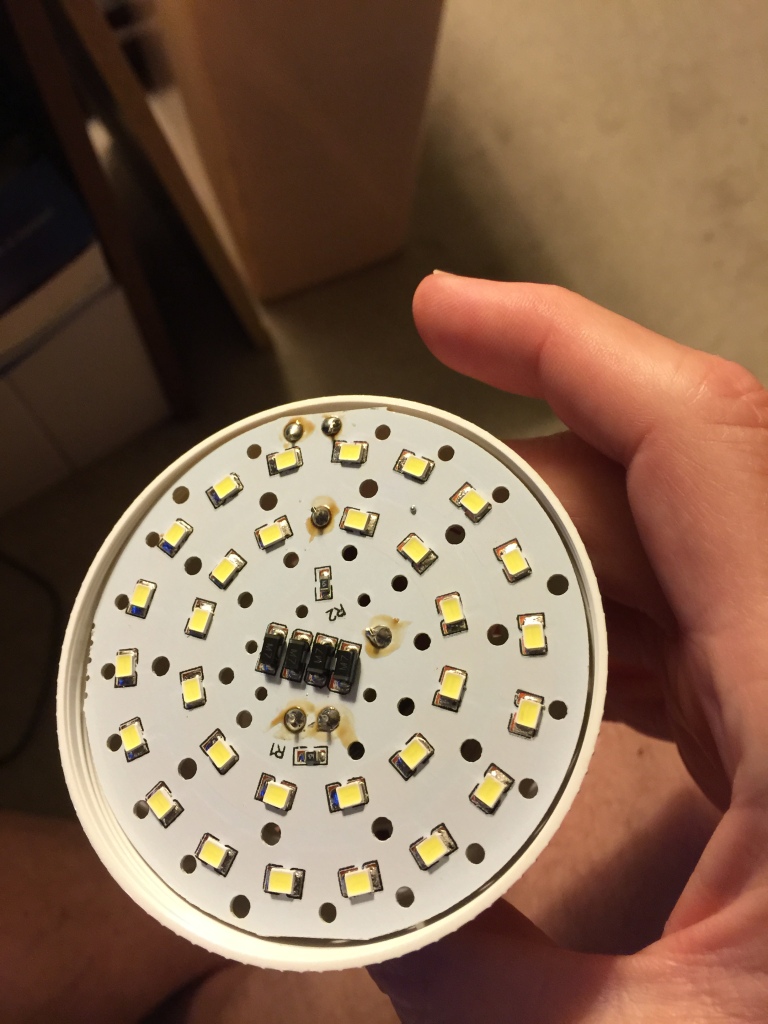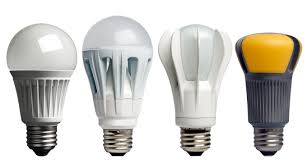CFL, LED Revisited
 Big corporations really suck when they go the extra mile forcing one to buy expensive stuff.
Big corporations really suck when they go the extra mile forcing one to buy expensive stuff.
Under the guise of “saving the planet” we have lost it!
First off let me just rant a little about the planet. The Earth has been around 4.5 billion years. Man has been around for about 6 million of those years but, we only have we been a “threat” to the planet the last 150 years or so.
When I say threat, not really. One lucky strike from a meteor and we are done! Toast, the next life form to take hold will hopefully be more evolved than some of our peers who think money is the answer to everything no matter who they screw!
Industrialization is claimed to be the largest threat to the planet along with the ever increasing population. I agree that millions of people all creating waste emissions from gasses to solids, probably are not doing the earth any good but, do you really for just one minute think that one Volcano, or large fire does not do as much if not more damage to the eco-system than man?
There is a super volcano that is due to erupt any moment in Yellow stone park. When that bad boy goes off it will be a life changer!
Then tell me about coal power plants or Gas guzzling SUv’s.

Yes, we are burning fossil fuels “dinosaurs” to heat and cool our homes and to drive our gas burning vehicles to and from the job and what have you.
If you really want to solve global warming first you really need to get truthful with the numbers, and facts, as what has been published thus far is to push a “carbon credit agenda” to make the rich richer and in the end is simply another tax!
Now, back to bulbs.
Edison through trial and error “brute force” came up with an incandescent light bulb.
The typical light in your home burns 60 watts of electricity.
It took me a few minutes to do the math for you, so here it is in a spreadsheet.
You can do any further multiplication you like, as in how many of these bulbs do you have and how long do you really leave them on.
The 100 and the 60 are representing incandescent “old school” bulbs.
The 12 is representing a CFL bulb and the 3 watt is representing the LED variety.
Basing the cost per kilowatt hour at 8.5 cents, this is what it would look like to run one bulb for a year never turning it off.
So, if you want to save the earth…or money, lets look at how and where you would put what kind of bulb.

I also think that we were pushed into using them by congress via some backroom deal with GE or some other maker of these things through the good folks at AVE K, you know lobbyist. Like republicans or not, this was a GW Bush thing and I think it smells.
CFL or any fluorescent bulb must stay on for a minimum of 15 minutes or you shorten the life of the bulb. That means, don’t put them in places that you turn the light on for a few moments and then off again. CFL or fluorescent tubes should go into places that you energize them, and then leave them on for hours, like a kitchen, family room or porch light.
This bulb died because the capacitor died. If you look at it you will see that it has bubbled up on the top. Checking the capacitor it is non functional.
GE must have purchased a plethora of bad capacitors from China!
If you look at the actual glass you will notice that there is no black around the base, this bulb died way too young…
LED bulbs don’t just quit “usually” unlike an incandescent of fluorescent. They grow dim over time as they age and one day you will notice that it is not very bright, and replace it. I like them in bathrooms and closets, desk lights and lights in areas where I don’t want a lot of heat generated.

The average cost of a CFL or LED bulb however is much higher than its incandescent counterpart.
While they have come down in price, they are still no where as inexpensive as an incandescent.
A box of 4 or even 6 on sale, was around $1. The CFL is around $2 each but that is now. When they first came out they were about $4 each. As other manufacturers entered into the arena the price came down.
The same is true of LED bulbs. These bulbs can get downright pricey!
As far as function goes we have the incandescent with fewest complications. A filament across the two electrodes sealed into a vacuum. Apply the right voltage and suitable current that the filament will light and there will be light, and heat!
Fluorescent is much more complex in that there is two filaments and high voltage applied which ionizes the gas inside. This gas reacts to the phosphorescent coating inside the bulb making light, And oh yes, they have mercury in them.
The CFL takes in 110 or 220 depending upon your location and converts it into the voltages and currents needed to start the process as well as maintain the process while voltage is applied. If you look inside the base of a CFL bulb you will see a host of associated circuitry to accomplish this task.
LED Bulbs are less complex in that they use minimal components to convert the voltages into the needed voltages to run the LED’s.
 There is not much heat and the circuitry is not complex. LED bulbs should really be less expensive than CFL and I look for that to be the case as time marches on. Currently you are still paying for the novelty much like the early adopters of flat screen TV’s.
There is not much heat and the circuitry is not complex. LED bulbs should really be less expensive than CFL and I look for that to be the case as time marches on. Currently you are still paying for the novelty much like the early adopters of flat screen TV’s.
Pay attention to these bulbs when you buy them as they must be set up for “dimmable” circuits if you intend to use them in a legacy lighting system that had incandescent lighting in it.

It is up to you, do the math!
-Best
(c) All rights reserved 2015






















